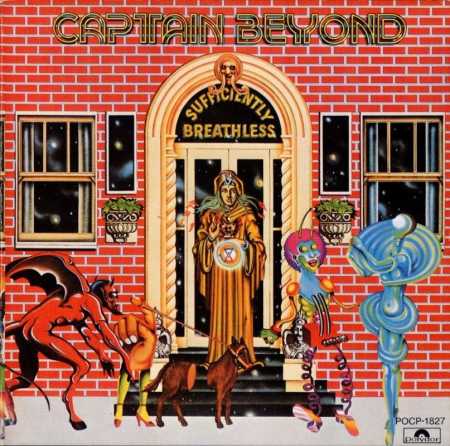
Captain Beyond was an American rock band formed in Los Angeles, California in 1971. The original line-up for Captain Beyond were singer Rod Evans, guitarist Larry "Rhino" Reinhardt, bassist Lee Dorman, and drummer Bobby Caldwell. Evans was the original lead singer for Deep Purple and probably best known for his vocals on their 1968 debut chart-breaker "Hush". Reinhardt and Dorman had played in Iron Butterfly; Dorman, in particular, played on most of Butterfly's early albums, including their 1968 breakthrough In-A-Gadda-Da-Vida. Caldwell had come to prominence playing with Johnny Winter. This line-up recorded the self-titled debut album, released in 1972. Following this album Caldwell left the band to join Derringer and was replaced by drummer Brian Glascock. Also joining the band around this time were Reese Wynans (later of Double Trouble) on keyboards and Guille Garcia on congas. The record company's chosen producer, Giorgio Gomelsky, did not like Glascock's drumming and requested a new drummer. Glascock was released and Martin Rodriguez was brought in on drums on the recommendation of Garcia. This six man line-up recorded the group's second album, Sufficiently Breathless. Tension during the recording of Sufficiently Breathless led to Evans quitting. The original line-up reformed later in 1973 for a US tour but the band split up at the end of the year. Sufficiently Breathless, is the second album by Captain Beyond, recorded at Capricorn Studios in Macon, Georgia and in The Record Plant, Sausalito, California, and was released in 1973
01 - Sufficiently Breathless
02 - Bright Blue Tango
03 - Drifting In Space
04 - Evil Men
05 - Starglow Energy
06 - Distant Sun
07 - Voyages Of Past Travellers
08 - Everything's A Circle
LINK
01 - Sufficiently Breathless
02 - Bright Blue Tango
03 - Drifting In Space
04 - Evil Men
05 - Starglow Energy
06 - Distant Sun
07 - Voyages Of Past Travellers
08 - Everything's A Circle
LINK
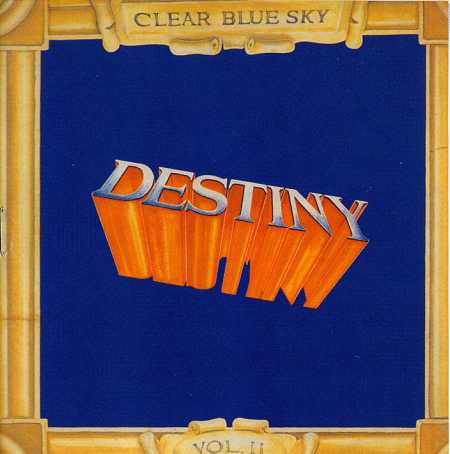 Originally a trio of friends from school, John Simms (guitar), Mark Sheather (bass), and Ken White (drums) grew up in the Acton area of London and started as a college circuit blues-rock band called Jug Blues (later Matuse and then X). Impressing manager Ashley Kozak, the band were given a deal with Vertigo, changed their name to Clear Blue Sky and recorded a self-titled record under the production of Patrick Campbell-Lyons. Still only eighteen, the three musicians mixed hard blues with progressive and psychedelic rock in an unusually mature way, and the LP was released in January 1971 sporting one of Roger Dean's earliest album covers. The group was occasionally compared to Cream, Led Zeppelin and early Jethro Tull, though the music had a firm prog sensibility unlike Cream or Zeppelin and sometimes may even remind of Rush. Clear Blue Sky's 1971 debut (reissued on Repertoire,1991) is considered their most important and the LP is a collector's item. The second record, "Destiny" [Saturn, 1990], released twenty years after the first (and then again in 1999 on Aftermath in CD format), is old material but shows an improvement in form and approach from the first session. 01 - Destiny 02 - Pick Up 03 - Bottom of Your Soul 04 - Follow the Light 05 - Back on the Road Again 06 - Vagabonds 07 - When I Call Your Name 08 - Waiting for the Day 09 - Killing Time LINK |
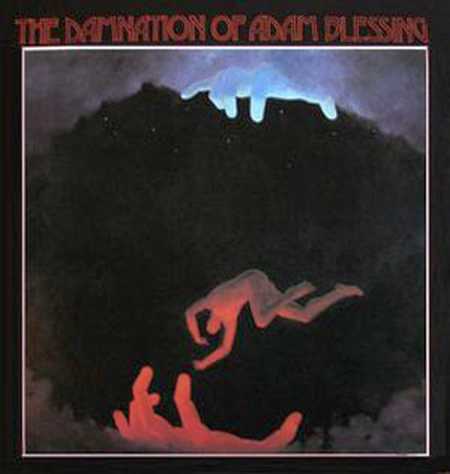 Damnation of Adam Blessing was formed in Cleveland in 1968 including veterans of the Garage Bands, The Alarm Clock, and The Society. Damnation of Adam Blessing's focus was obviously on contemporary Hard-Rock, but the arrangements were far more advanced. While most Heavy Rock acts featured screaming or shouting vocalists, Damnation of Adam Blessing tested the waters with low-range, gospel-like harmonies and Adam Blessing's grinding yet melodic leads. Adam Blessing - Lead Vocals, Ray Benich - Bass, Jimmy Quinn - Rhythm Guitar - Vocals, Bobby Kalamasz - Lead Guitar - Vocals and Billy Schwark - Drums - Percussion 01 - No Way 02 - Death Of A Virgin 03 - Driver 04 - Everyone 05 - Back To The River 06 - Money Tree 07 - Ba-Dup 08 - New York City Woman 09 - In The Morning 10 - Smile LINK |
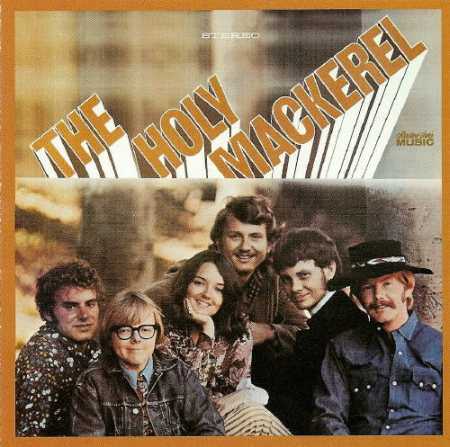 After singer/songwriter Paul Williams landed one of his songs on the flip side of Tiny Tim's "Tip Toe Thru The Tulips", he was approached by record producer Richard Perry with an offer to cut his own album. It was a giant step for Williams, who had just lost his job at the White Whale label a year earlier, an event that left him distraught and sour on the music industry. Apprehensive about going it alone,he formed a band with ex-Jefferson Airplane bassist Bob Harvey, guitarist George Hiller, flautist Cynthia Fitzpatrick, ex-Turtle drummer Don Murray and Williams' brother Ralph on guitar. Dubbed the Holy Mackerel, the band recorded it's psychedelic pop debut throughout the spring of 1968. Before the record's completion, Harvey left and was replaced by future Elvis Presley bassist Jerry Scheff, and then drummer Don Murray was replaced by Michael Cannon. The record appeared in November of 1968 and despite being a Billboard magazine "Special Merit Pick", it went nowhere and the Holy Mackerel called it quits soon after. Williams began his successful solo career a year later. (AMG) 01 - The Secret Of Pleasure 02 - Scorpio Red 03 - The Lady Is Waiting 04 - Wildflowers 05 - The Somewhere In Arizona At 430 A.M Restaurant Song (And Now I Am Alone) 06 - Prinderella 07 - Bitter Honey 08 - Nothin' Short Of Misery 09 - The Golden Ghost Of Love 10 - The Wild Side Of Life 11 - 10,000 Men 12 - 1984 LINK |
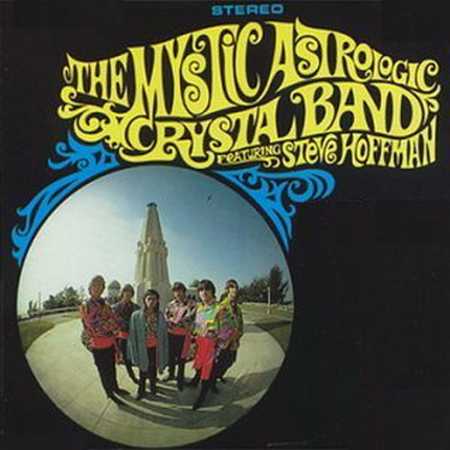 A third-tier late-'60s L.A. psychedelic outfit, the Mystic Astrologic Crystal Band were not as weird as their name indicated. They were, more to the point, as trendy as their name led one to believe, recording common-denominator psychedelic pop for the GNP label that emulated much of the form, but delivered little in the way of lasting content. (AMG) This Los Angeles area pop group recorded two interesting albums for Gene Norman’s Carole label in 1967 and 1968. The first, The Mystic Astrologic Crystal Band Featuring Steve Hoffman was a pleasant collection of flower pop ditties highlighted by the sitar-led "Factory Endeavour” and the A-side to their only single, "Flowers Never Cry.” 01 - Factory Endeavour 02 - Early Dawn 03 - Antagonizing Friend 04 - Barnyard Philosophy 05 - Flowers Never Cry 06 - Geometry Alley 07 - October Sunshine 08 - Le Vent 09 - Publicity Inclined 10 - Yesterday Girl LINK |
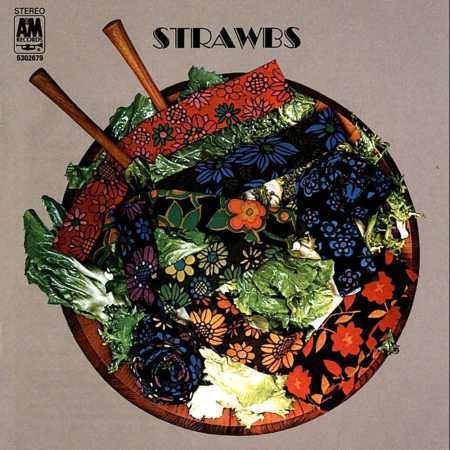
Strawbs (or The Strawbs) is an English rock band founded in 1964. Although the band started out as a bluegrass group they eventually moved on to other styles such as folk rock, glam rock and progressive rock. They are best known for their hit Part of the Union, which reached number two in the UK charts in February 1973. They were originally known as the Strawberry Hill Boys. Although they started out in the sixties as a bluegrass band, the Strawberry Hill Boys' repertoire soon shifted to favour their own (mainly Cousins') material. They were the first UK signing to Herb Alpert's A&M Records and recorded their first single "Oh How She Changed" b/w "Or Am I Dreaming" in 1968[1], which was produced and arranged by two highly influential seventies’ producers, Gus Dudgeon and Tony Visconti, who also worked on their critically acclaimed first album, Strawbs, which was released in 1969. (Note: Although that first single was issued in the U.S. on A&M, neither of their first two A&M LP's were issued in the US until around 1975.) Strawbs is a studio album by Strawbs, their first (not counting the Sandy Denny & The Strawbs LP recorded in Demark.)
01 - The Man Who Called Himself Jesus
02 - That Which Once Was Mine
03 - All The Little Ladies
04 - Pieces Of 79 And 15
05 - Tell Me What You See In Me
06 - Oh How She Changed
07 - Or Am I Dreaming
08 - Where Is This Dream Of Your Youth
09 - Poor Jimmy Wilson
10 - Where Am I - I'll Show You Where To Sleep
11 - The Battle
LINK
Nenhum comentário:
Postar um comentário